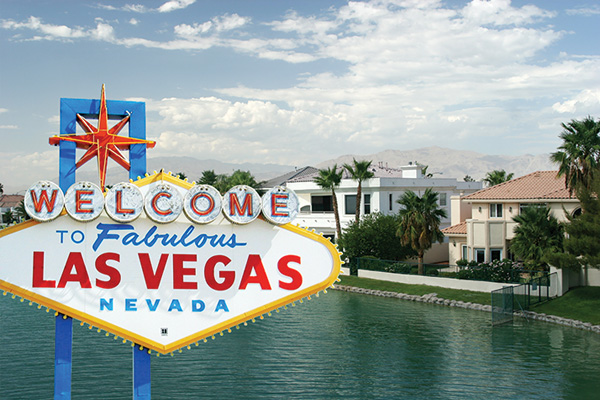Despite the tragic massacre in Las Vegas where 59 people died during a concert this fall, big money is continuing to flow into the housing market there.
Kenneth Lowman, broker/owner of Luxury Homes of Las Vegas, reports that Sin City’s luxury home market is on pace for its best year in the past decade. So far this year, there have been 364 sales of houses at more than $1 million each. That’s a 35 percent jump from last year’s 268 luxury sales.
According to another Vegas-area luxury realty broker, Rob Jensen, sales of big-ticket houses in September were up 49 percent over a year ago. The most expensive sale in September was a $7.45 million home, followed by a $5.5 million home on the same street.
Lowman also reports that with about 400 luxury homes still on the market, Vegas’ high-end sector is “solid and balanced.”
About 20 percent of the luxury sales are in Summerlin, a master planned community with several guard-gated neighborhoods. “We have new communities raising the bar for luxury home prices and quality,” Lowman says, including one where lot prices start at $3 million. “World-class communities like this will attract buyers that might have passed over Las Vegas previously.”
***
Most immigrants to this country don’t buy houses when they arrive. They rent. Indeed, one in four apartment households is headed by an immigrant.
According to research commissioned by the National Multifamily Housing Council, more than four-fifths of the 18- to 34-year-olds who came to the states between 2006 and 2015 still rent. And seven out of 10 who arrived between 1996 and 2005 are still renters.
The majority of the most recent immigrants who rent came from the Middle East, Southern Asia and sub-Saharan Africa. The fewest hailed from Canada.
Those from Southern Asia had the highest incomes, at just over $70,000 a year, yet they rented more often than they bought. Canadians had a median annual income of $70,000, while the annual median for Europeans was more than $60,000. Immigrants from the Middle East had the lowest median income, under $30,000.
***
Purchasing a home for cash certainly has its advantages, and not just for the seller. But if you are a cash buyer, it may not be smart to make a lowball offer, advises Beth Atalay, the broker/owner of Cam Realty and Property Management in Clermont, Florida.
For the seller, as Atalay posted on the ActiveRain real estate site, cash offers usually mean a quick closing with few, if any, contingencies, save for a home inspection. Cash can mean no appraisals and no worries about financing falling apart. And for buyers, paying cash generally means no out-of-pocket expenses related to obtaining a mortgage and no interest charges for the time they own the property.
But buyers have to realize that either way, cash or mortgage, the sellers will eventually get their money, Atalay pointed out. She offered this example:
Say a house is listed at $290,000 and receives three offers. One is $220,000 in cash, to close in two weeks. Another is for $295,000 – $5,000 over the asking price – to close in 30 days. And the third is for $290,000 with government-insured financing, to close in 45 days, but asking a 3 percent seller concession to cover closing costs and prepaid items such as property taxes.
If cash is king, the seller would accept the first offer, Atalay says. But by waiting just 14 more days, the seller would net $75,000 more by taking the second offer.
The question is, which would you accept?
***
The residential sector of the real estate universe accounts for less than 8 percent of the water used in the United States, according to a new report from the National Association of Home Builders (NAHB).
In 2010, residential water use totaled 27,400 million gallons per day (mgal/d).
But from a more holistic perspective that considers water used for all purposes, residential use is a relatively small share of the nation’s thirst. Total withdrawals of water in 2010 were 355,000 mgal/d. Consequently, the 27,400 mgal/d used by residences accounted for just 7.7 percent of the total.
NAHB calculates that America’s typical home uses about 260 gallons of water per day. But the average varies widely by state, from a low of 100 gallons per day in Maine to a high of 472 gallons in Nevada.
Lew Sichelman has been covering real estate for more than 30 years. He is a regular contributor to numerous shelter magazines and housing and housing-finance industry publications. Readers can contact him at lsichelman@aol.com.

